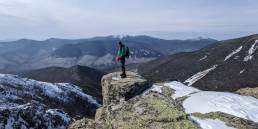Mild technical climbing, remote and rugged terrain, and spectacular Adirondack High Peak views make the Trap Dike a classic Northeast winter ascent.
Climbing the Trap Dike in winter—a great route for climbers looking for an adventure in a more remote, alpine setting—makes for an unforgettable experience. The approach is mellow but long, and the climb is technically simple yet committing. Once you’re at the top of Mount Colden, the descent options are plentiful, from hiking the trail back to a backcountry ski descent. Conditions vary wildly, depending on the time of season or weather, and any party’s experience can be incredibly unique from another’s, which means you’ll always be able to come back for more.
Quick Facts
Distance: 11 miles, out-and-back
Time to Complete: 1 day
Difficulty:★★★★
Scenery:★★★★
Fees/Permits: $10 parking at Heart Lake ($8 for ADK Members)
Contact: http://www.dec.ny.gov/lands/9164.html
Turn-By-Turn
Start at the Adirondack Loj trailhead, located at the end of Adirondack Loj Road off Route 73 in Lake Placid. Try to arrive early, as the parking area often fills up on weekends. While a few ski trails weave throughout the immediate area, be sure not to use them for the approach, unless, of course, you are skiing in.
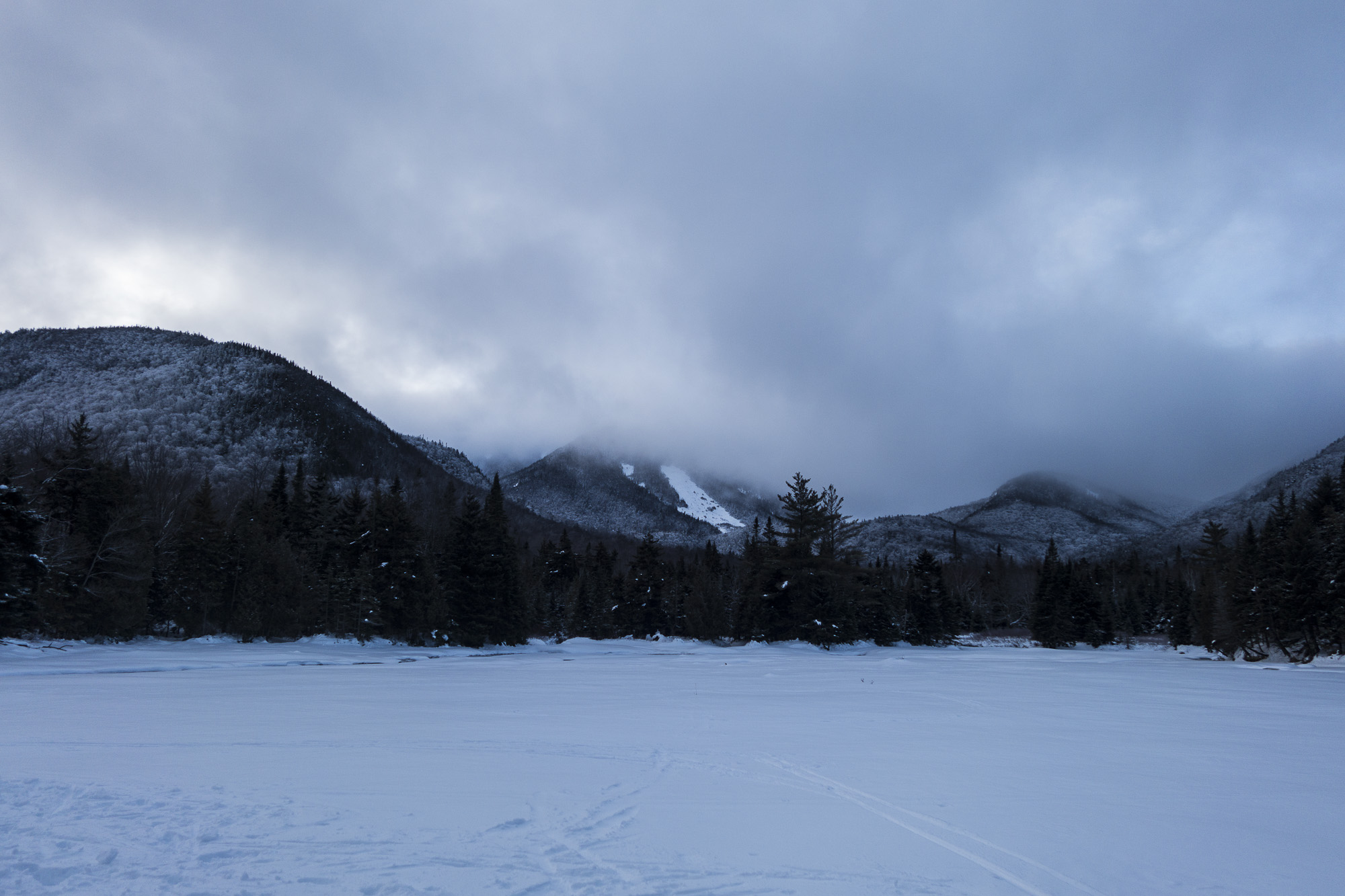
Marcy Dam
Travel south on the Van Hoevenberg Trail from the trailhead for 1.5 miles to a major trail intersection (44.1728, -73.9589). Continue southeast another 1.1 miles to Marcy Dam. Marcy Dam is the first landmark location for the approach to the Trap Dike, and is a destination for many day-hikers and skiers. Plus, with little elevation change between the trailhead and Marcy Dam, expect this section to have moderate to heavy traffic on weekends.
Marcy Dam offers views of the surrounding peaks and slides, as well as multiple lean-tos and campsites. For multi-day trips, this makes a great base camp location.

Into the Pass
From Marcy Dam, continue south, around the eastern side of the pond towards Avalanche Pass. The trail here will begin to climb slightly. After passing some additional lean-tos, the trail then becomes steeper for the final ascent to Avalanche Pass. Be extra careful on the trail’s beginning section; it serves as the end portion of the Avalanche Pass’ ski descent trail, so you might find people skiing down at you.
About one mile after Marcy Dam, the trail splits between the hiking and skiing paths. Always ascend the hiking trail, as skiers are not expecting anyone to be coming up. From this point, the trail climbs a final 400 feet in just over a half-mile, until it opens up to the picturesque Avalanche Lake.
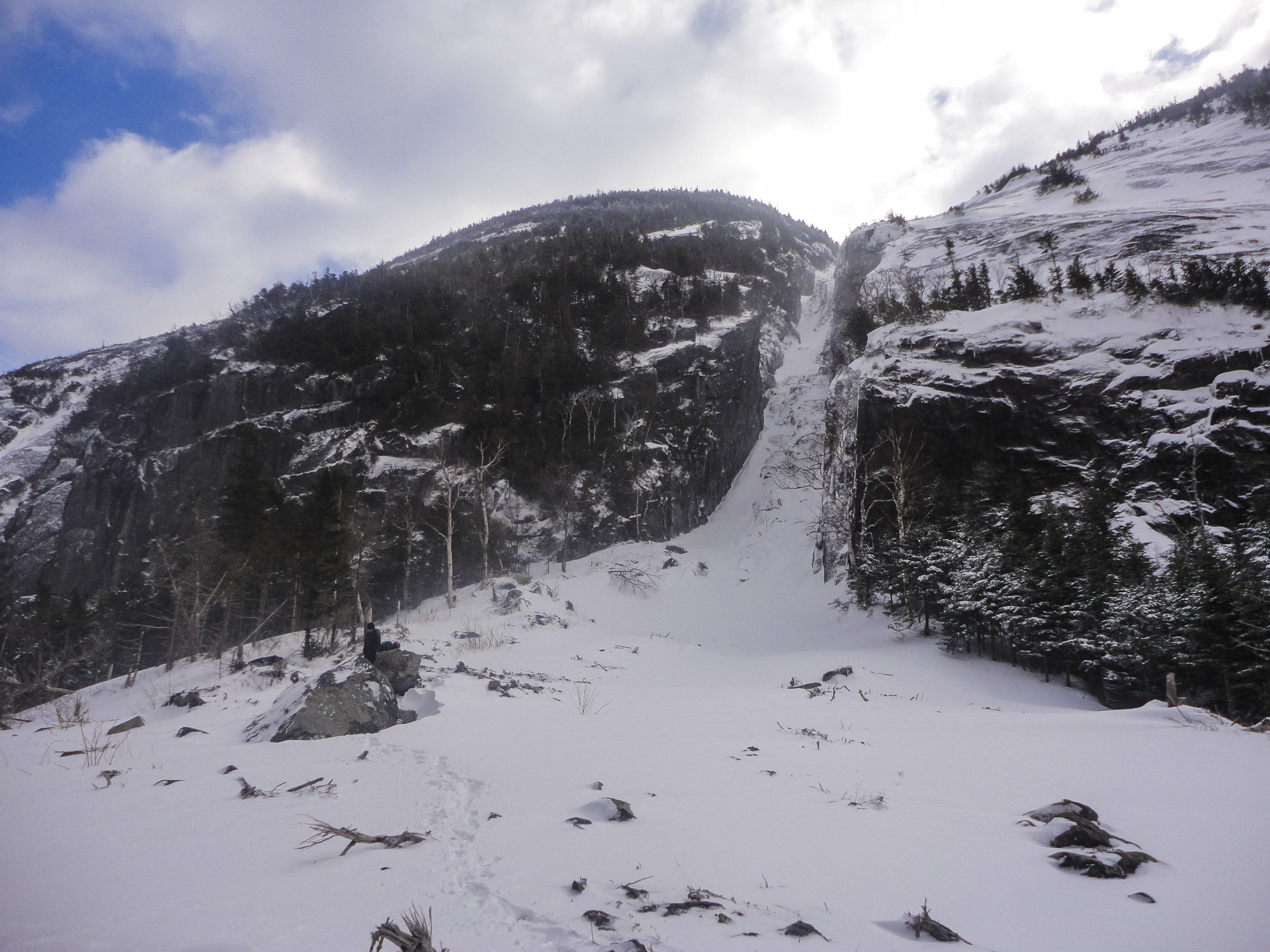
Finding the Trap Dike
In the early or late season, Avalanche Lake may have little to no ice and may not be crossable. However, barring any strange warm spells, the lake freezes over and provides a direct finish to the approach for the majority of the winter season. But, regardless of the time of year, always use caution when crossing frozen lakes. The entrance to the Trap Dike (44.1318, -73.9678) is the obvious, massive cleft in Mount Colden that spills out onto Avalanche Lake’s eastern side. Here begins the route’s technical portion; so, the Trap Dike’s entrance makes for a good location to refuel, rehydrate, and reorganize gear before you begin the technical ascent.
If Avalanche Lake is not frozen, access takes a little bit longer. Remain on the hiker’s trail and follow it south, across the wooden “Hitch-Up Matildas” anchored into the cliffs alongside Avalanche Lake. At the lake’s south end, leave the hiker’s trail, and follow the lake shore north 250 yards to the Trap Dike’s entrance.
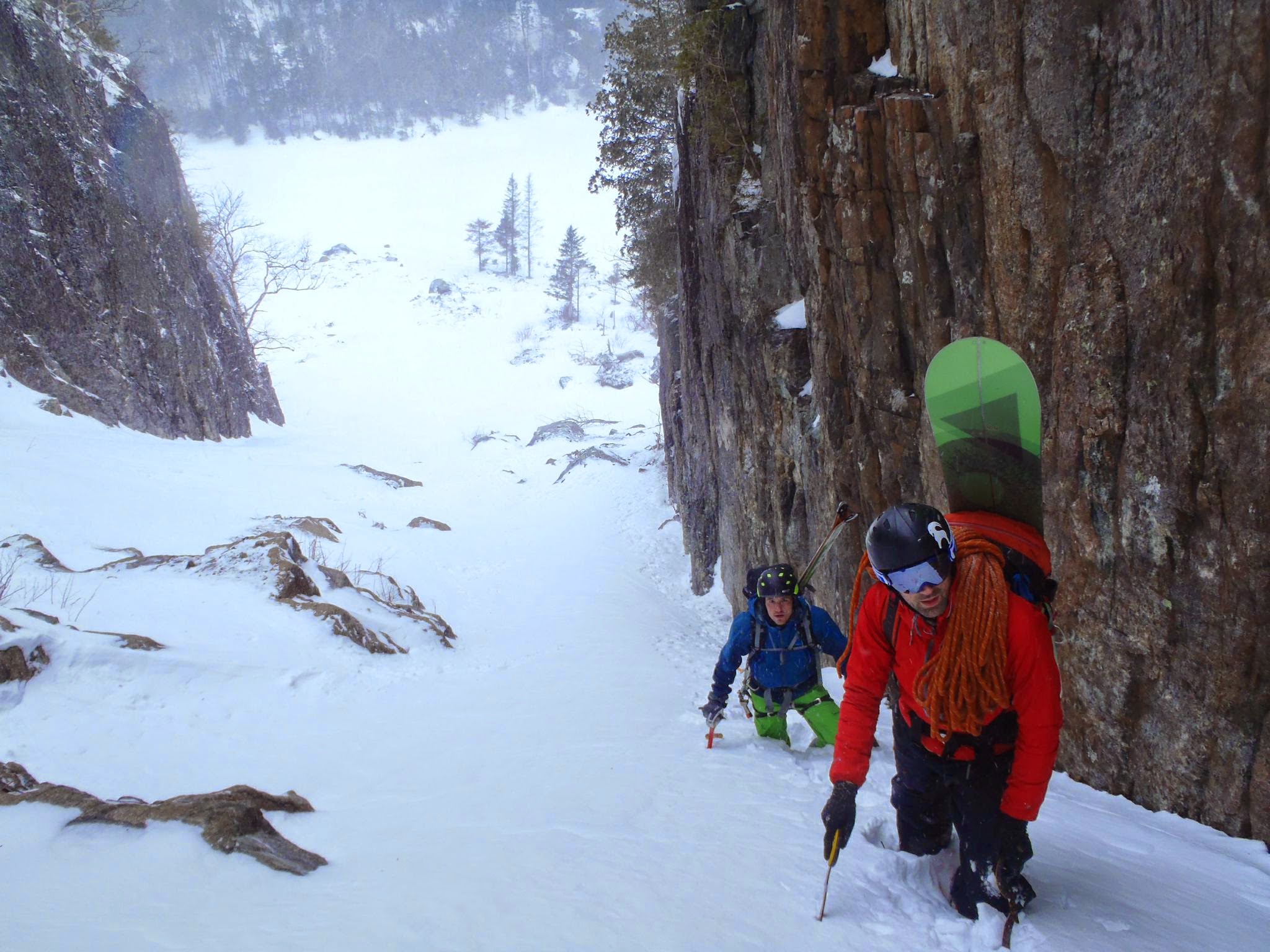
Climbing The Ice
The Trap Dike’s technical portion contains two single-pitch ice steps, with snow climbing in between. These pitches are generally rated at WI2, but early in the season, the ice steps can be thin and chandeliered, providing a challenge for climbers and offering few options for protection. Mid to late season, however, the ice becomes fat and reliable, offering greater protection and the choice to build screw anchors or snow anchors. Good rope management saves time, as the two steps are separated by a short snow field, which requires the anchor for pitch 1 to be broken down before you start pitch 2.
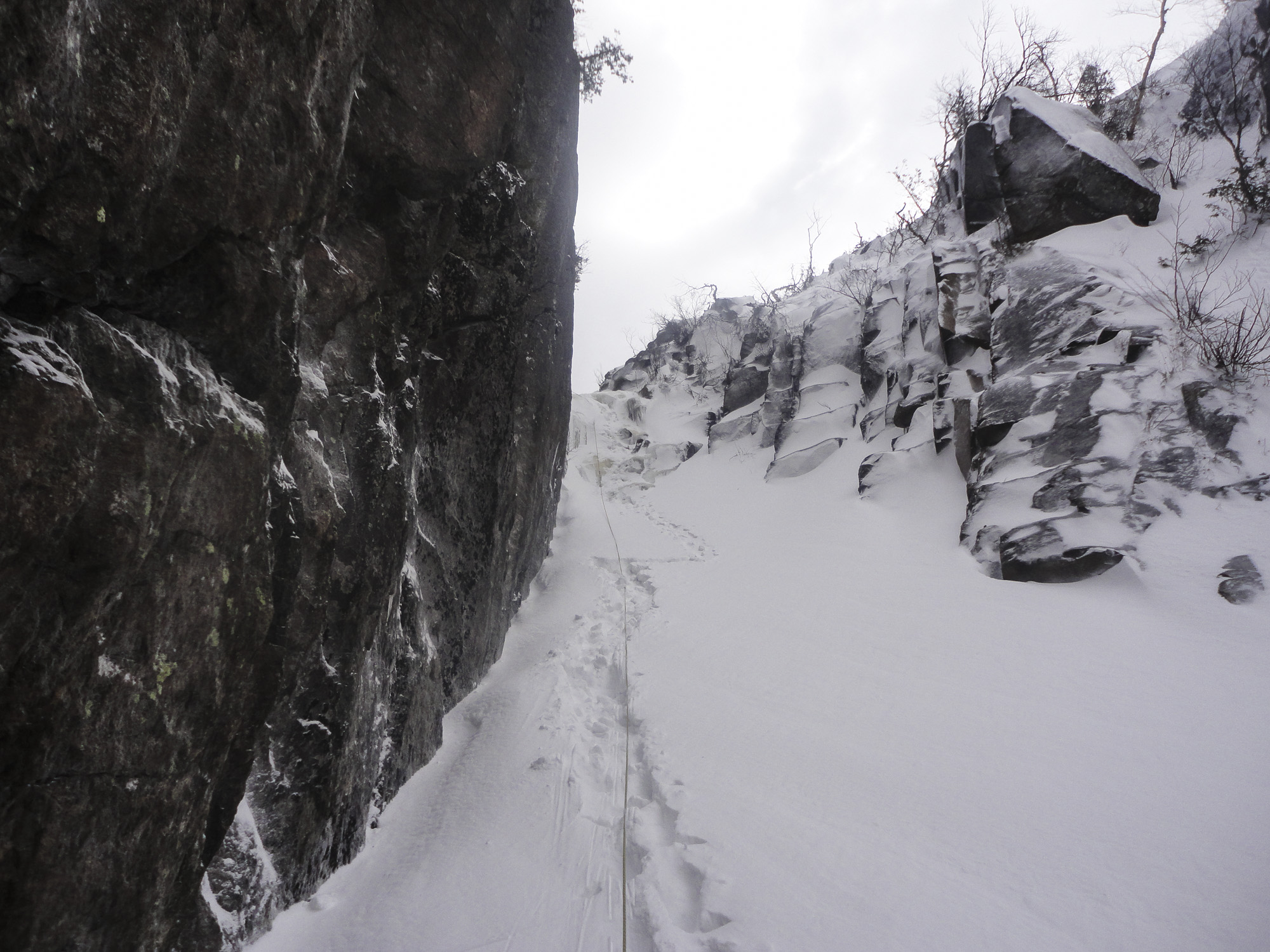

At the top of pitch 2, continue to hike up the Trap Dike while remembering to stop and check out the view behind you. Caution is required here. Even though the route has mellowed out to low-angle ice and snow, an unprotected slip could result in sliding out of control over the second ice pitch’s top edge. As you ascend the Trap Dike’s upper section, the large, wide upper slide will come down to meet you on climber’s right, providing an exit onto the exposed slab.

Up The Slide
Climbing up the steep slab towards Mount Colden’s summit is relatively straightforward. However, the slab’s conditions can vary greatly, depending on the weather and time of season. Early-season climbers should expect to find thin patches of unconsolidated snow, verglas ice, and bare rock. In these conditions, the push to the summit can be treacherous and difficult, requiring careful steps the entire way.

In mid to late season, the slab accumulates more snow, which allows for seemingly endless, leg-burning step-kicking to the summit. Lucky climbers may encounter perfect neve snow, which can help to conserve climbing energy. Regardless of conditions, however, the slog up can sometimes seem endless, so it is important to stop and take in the view of Algonquin and the surrounding mountains to help recharge the spirit. Before you reach the summit (44.1268, -73.9600) and subsequent hiking trail, you’ll pass through a short band of trees at the end of the slide.
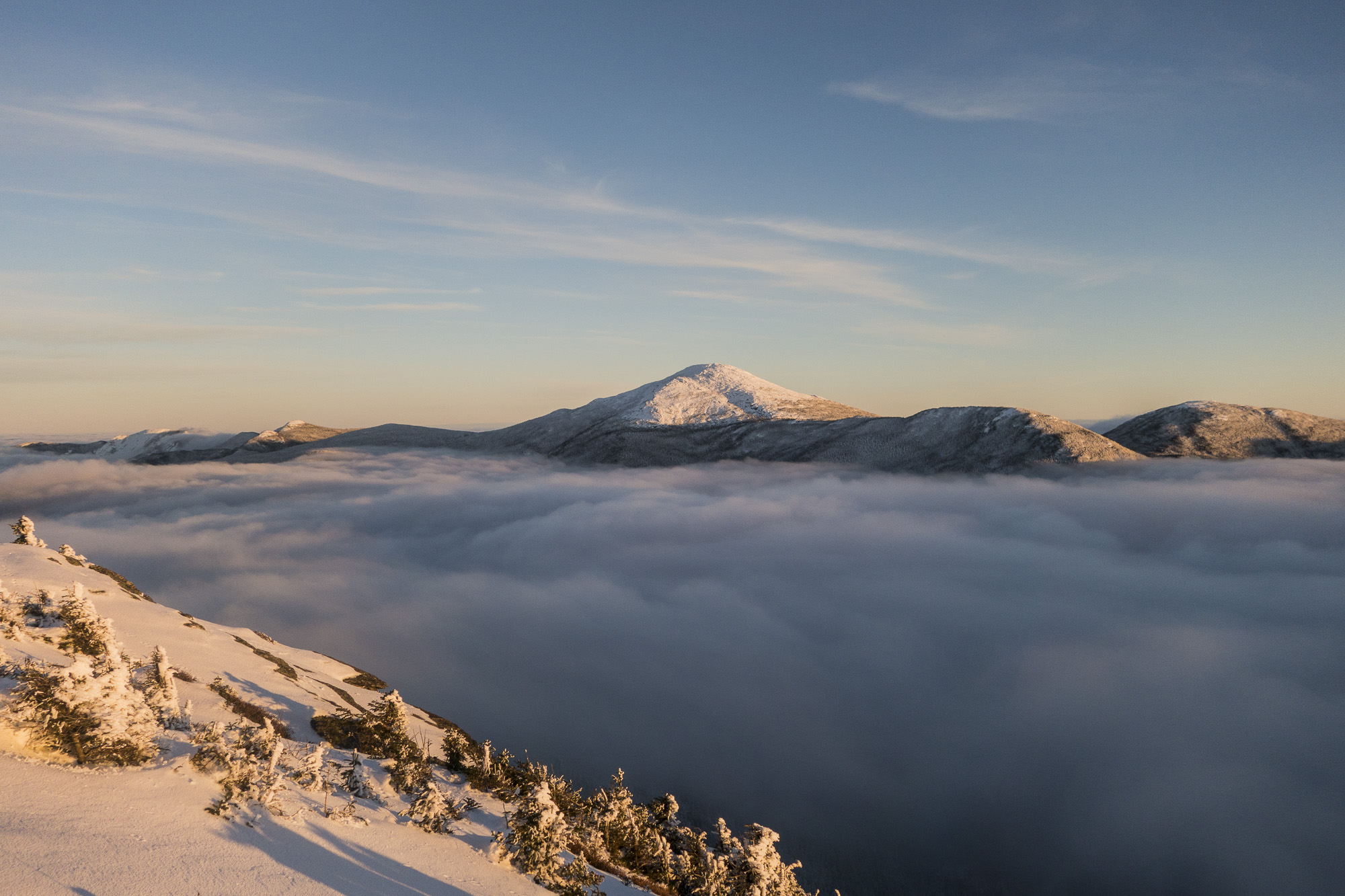
Coming Back Down
One of the best parts about climbing the Trap Dike is the multiple options for returning back to the trailhead. Backcountry skiers can choose a ski descent, with a required rappel down the ice pitches, or one of Mt. Colden’s many other slides. Without skis, however, the quickest route back follows the summit trail, heading northeast for 3.6 miles past Lake Arnold and down to Marcy Dam. Once again, be wary of skiers descending the trail between Avalanche Pass and Marcy Dam. From Marcy Dam, follow the same Van Hoevenberg Trail for 2.6 miles back north to the Adirondack Loj to complete a long but rewarding adventure.
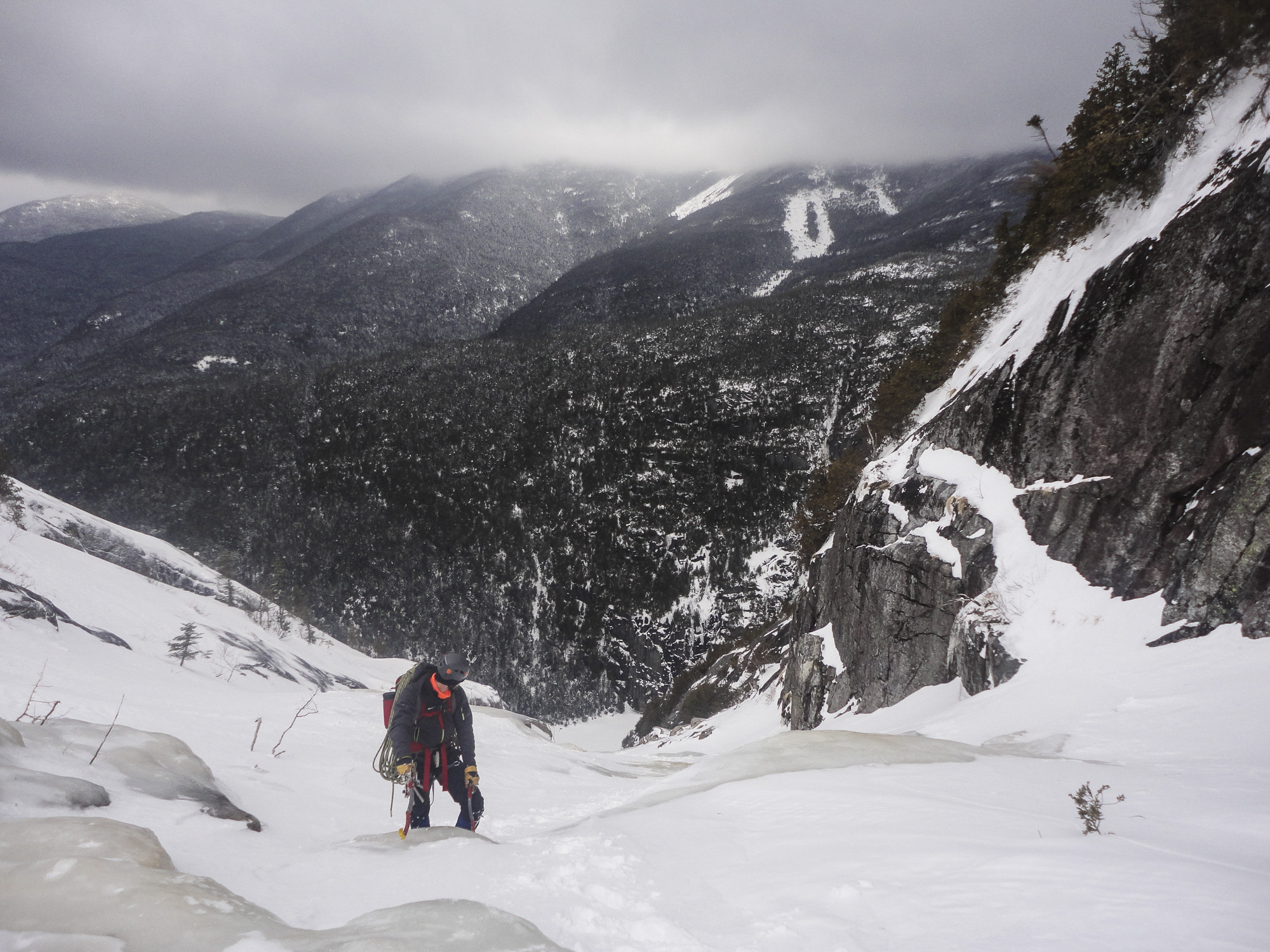
The Kit
- A technical mountaineering tool or axe, like the Petzl Sum’Tec, is ideal for the Trap Dike. The slightly curved shaft and aggressive pick allow you to climb ice pitches with ease, without impeding your ability to plunge the shaft into the snow for climbing on the upper slide or creating a snow anchor.
- Much like the hybrid axe or tool, a crampon that can handle both vertical ice and snow steps, like the Black Diamond Snaggletooth Pro, will make your climbing more efficient. The Black Diamond Snaggletooth brings the best of both worlds together with its unique single-horizontal spike.
- Hikers in the Adirondacks might not be used to wearing a helmet. But, climbing is dangerous, and dropping an ice axe on your partner’s head can make for a really bad day. The Petzl Sirocco will protect your noggin, and due to its lightweight design, you won’t even notice it’s there.
- Winter travel through the High Peaks requires snowshoes or skis when there’s more than eight inches of snow on the ground. This helps prevent postholing and protects the trail conditions for everyone. The MSR Revo Explore 25 Snowshoes are lightweight and easy to take on or off, so you aren’t fumbling around when it’s time to change to your crampons.
- Every year, there are reports of people getting lost or rescued during winter in the High Peaks. Everybody thinks it won’t happen to them, but it is important to be prepared if you are stuck overnight and need warmth. The SOL 2-Person Survival Blanket from Adventure Medical Kits will keep you and your climbing partner warm in case of an unexpected overnight.
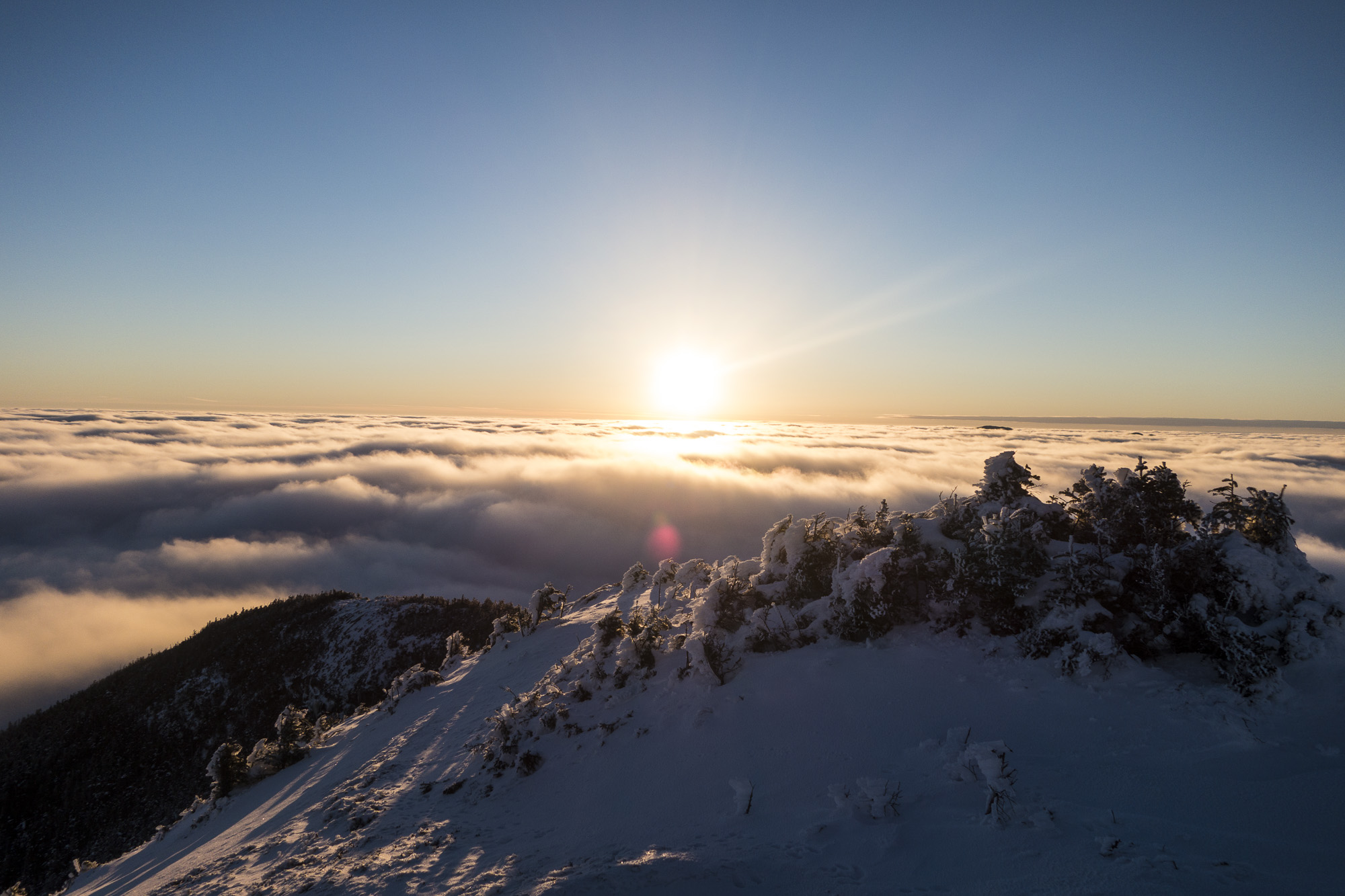
Keys to the Trip
- While, compared to other parts of the U.S., the East Coast sees fewer avalanches, they still do happen, and the risk is still real, especially on exposed slides like the Trap Dike’s upper portion. So, consider educating yourself on traveling through avalanche-prone terrain with the EMS Climbing School’s AIARE training. The Trap Dike, while usually considered safe, has all of the ingredients for avalanche danger.
- Weather predictions in the Adirondacks can be very fickle. If you are planning the Trap Dike as a day trip, consider having a flexible window open to pick the best day. While poor weather poses greater challenges, the views on a nice day are second to none, and are a great way to pay yourself back for all the hard work.
- This guide was written for a day trip, but the Adirondacks, and particularly the Marcy Dam area, offer many other hikes and climbing adventures. Consider planning for a longer journey and camping out. As such, your return hike back to base camp will be shorter, and you will be set up to head back out for a different hike or climb the next morning!
- After your triumphant climb, you are sure to be hungry. Lake Placid is overflowing with great restaurants, but a dependable go-to is always the Lake Placid Pub and Brewery. The food is delicious and filling, and the Ubu Ale is as classic as the Trap Dike itself

Current Conditions
Have you climbed the Trap Dike recently? Post your experience and the trail conditions (with the date of your hike) in the comments for others!
Aaron Courain
Aaron Courain is a mechanical engineer by trade as well as an aspiring husband, who grew up in northern New Jersey. He is a team member of the New York Adventure Racing Association, which allows him to be “just ok” at multiple sports, instead of really good at one. Climbing and adventure racing has provided a constant challenge and outlet for outdoor pursuits, while living in NJ has forced him to get creative about fitting as much outdoors time as possible into the daily grind.
Related Posts
April 12, 2024
Explore Like a Local: The Outdoor Mecca of North Conway, NH
There's a lot to love about this New…
April 3, 2024
5 Things To Do in the Boston Area During Mud Season
Adventure opportunities are abundant…





